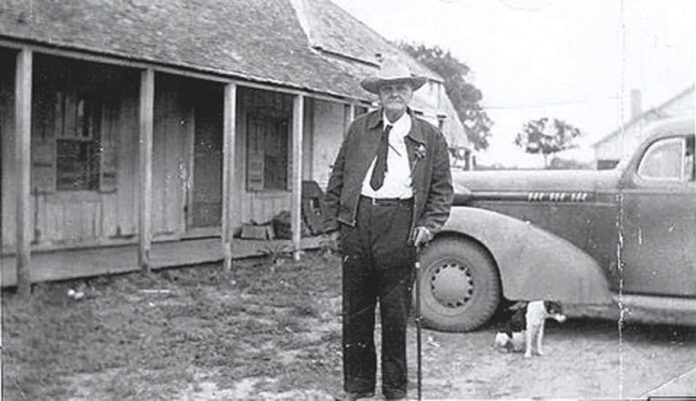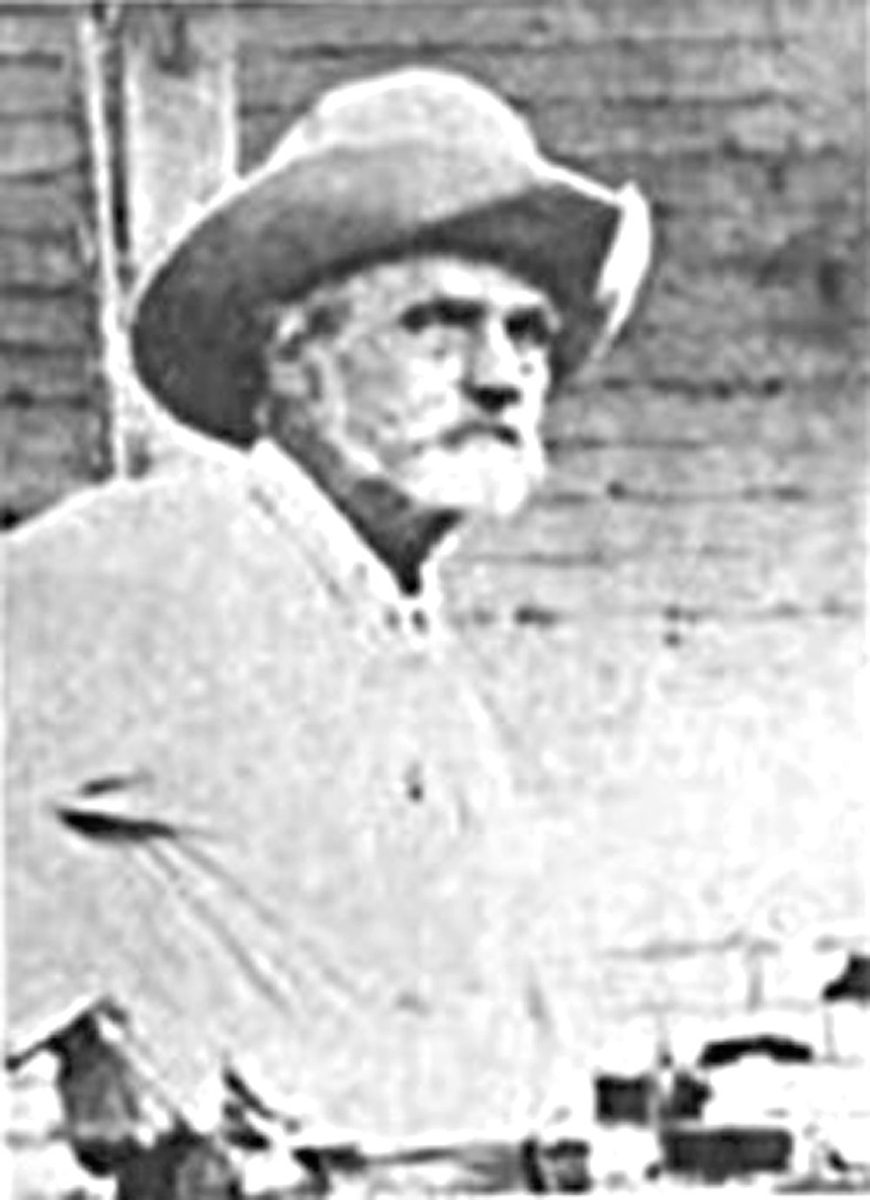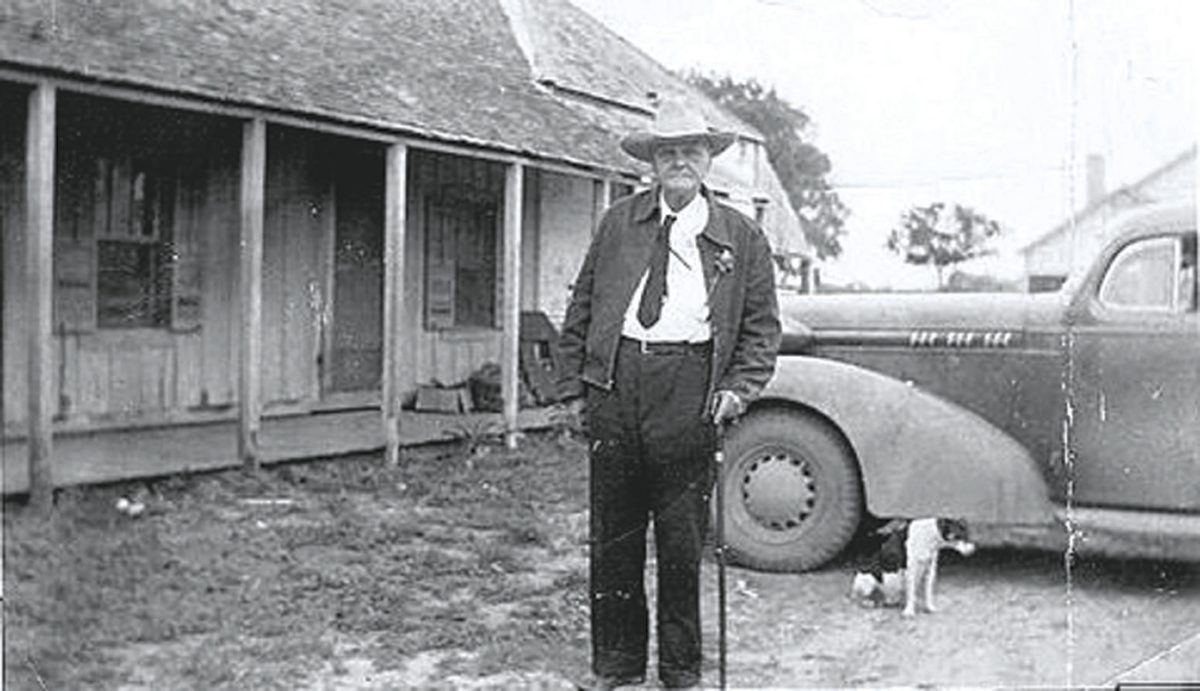BY NORMAN ROZEFF
After a youth full of more adventures that few experience over a lifetime, George Preston Durham settled down, literally, to more pastoral pursuits. Yes, he did fudge a little when he recited his early life story to 30-year San Antonio newspaper writer Clyde Wantland, who set it down in “Taming the Nueces Strip” first published in 1962.
He claimed that he was a 15-year-old when he came to Texas in search of Leander H. McNelly. He was actually nearly 19 years old, having been born in Georgia March 11, 1856. In the August 1870 U. S. Census of Taliaferro, Georgia, he is noted to be 13, and his father John had died sometime between the 1860 census and the 1870 one.
Why did the young Durham, who made it only through the fourth grade of elementary school, make the difficult trip to Texas? He had heard of the exploits of the former Texan Confederate States of America officer (and now one of four Texas Ranger captains) Leander McNelly from his farmer father who served under McNelly in the CSA Army during the Civil War (or as his southern father would have termed it the “War of Northern Aggression”).
Outside of his adventurous nature George did not have any specific plans once he arrived in Burton (a small town in Washington county west of Brenham), but, as luck would have it, Democrat Governor Richard Coke in April 1875 had called upon McNelly to form a special group of Texas Rangers to battle bandits and criminals in the Nueces Strip area of south Texas.
Wikipedia relates, “In two days, McNelly recruited 41 men”, but this number soon shrank to 29 to comprise Company A Frontier Battalion. He rejected most native Texans who had applied so that they would not have to face the possibility of shooting at their own relatives or friends. The group became very loyal to him, and called themselves the ‘Little McNellys’”. George was the youngest ranger to serve for McNelly. Records indicate that George was a Texas Ranger from 1875 through early 1877. He certainly was not hired for his proficiency with guns. He failed miserably in demonstrating his marksmanship to McNelly. He would improve with on-the-job experience.
It would be a half century after his time with McNelly that Durham would record his experiences with the company. These, of course, included the killing of 14 cattle thieves at Palo Alto near Brownsville and the display of their dead bodies (“stacked like cordwood in Market Plaza”) in the city, the illicit incursion into Mexico where the party had interaction with Juan Cortina’s followers and the rustler, General Juan Flores Salinas, which led to a battle termed “The Las Cuevas Affair”, and in Texas territory in pursuit of the notorious cattle thieve John King Fisher. Durham matured quickly after the Palo Alto encounter. Years later he was quoted as saying “ [I] quit being a scared country boy. I was a man. A Ranger. A Little McNelly.”
He was one of the rangers selected to drive the King Ranch branded recaptured cattle from the river back to Richard King’s Santa Gertrudis Ranch. That is how he met Richard King who would later offer him a position in his vast outfit. More importantly this is also where George met his future wife. As he later described it:
We ate in the grub shanty. Only it wasn’t a shanty — it was a hall filled with four tables seating maybe a hundred. We filed by and filled our mess kits and got a cup of coffee. A woman and young girl gave us refills whenever we needed them. I soon found out that by emptying my coffee cup this girl would come up, reach across my shoulder, and say “Could I pour you some more?” I would have drunk cup after cup of coyote poison if she’d have refilled for me. Three times I said, “If you don’t mind, ma’m,” and three times I said, “Thank you, ma’m.”
Whenever she walked up it seemed like somebody had dumped over the lilac water. I reckon I’d have sat there and drunk coffee till it ran out of my ears, but she seemed to catch on after awhile and didn’t come back to me.
The young woman was Caroline Henrietta “Carrie” Chamberlain. She was the niece of Mrs. Henrietta Chamberlain King, Richard’s wife. She had been born on the ranch on August 3, 1871 when her father Peter was 22 and her mother Felipa Anaya Rodriguez was but 14. Carrie and George “Josh” Preston Durham were married at the ranch in what is believed to be 1889. He was about 13 years older than she.
The first of 10 children born to them was daughter Mary in 1891 to be followed quickly by Carrie 1893; George Preston Durham, Jr. 1895: Bland R. 1896; Henrietta, 1899; Sarah 1901; Layroysier 1904; Lee 1905; Eddie 1907; and Hal John 1911. Caroline was to die at age 43 in Brownsville on March 22, 1915 and is buried there.
After the Ranger force was disbanded, Durham served as Captain King’s bodyguard for some time before marrying Caroline Chamberlain. Durham had started at the King-Kenedy Ranch, moved to the Laureles Division, and then on to the Santa Gertrudis Division before moving to the El Sauz Ranch Division of the King Ranch where George became a foreman over the El Sauz District. George succeeded Edward B. Raymond, who had been foreman since 1874, and for whom Raymondville was later named.
The El Sauz Ranch is one of the oldest ranches in Texas having been established in 1792 when the San Juan de Carricitos land grant was given by the Spanish Crown to Jose Narciso Cavazos. Encompassing more than 584,000 acres, this was the largest Spanish land grant in South Texas. “Sauz” is a Spanish word for the native black willow tree. Durham worked for the Kings until his death in 1940. As caporal, or “straw boss,” of the El Sauz Division, Durham had great responsibility over men and cattle. For many years he also served as a deputy sheriff for Willacy County, after it was spun off from Cameron County.
His low salary at the ranch was supplemented by a small U.S. Government pension that he received for serving in the Indian Wars under Captain L.H. McNelly’s Special State Troops, Texas. He had applied for it in 1922. Upon his retirement he was succeeded by two of his sons, George Durham, Jr. and Bland Durham, and a nephew, Beto Durham. George was to die May 20, 1940 and is buried in the Raymondville Memorial Cemetery. He was 84 years of age and certainly the last of the McNelly Rangers. A film, loosely based on George’s book, Taming of the Neuces Strip: The Story of McNelly’s Rangers, was made in 1999. The 2001 movie release was called Texas Rangers. The production costs were said to be $15–17 million. The film, produced after a buyout by Harvey and Bob Weinstein, bombed, earning only $763,740.
The originally-sought casting hadn’t worked out, so young actors were used instead. Too many liberties were taken with the original script and also the facts. Screenwriter “John Milius claimed that Miramax ‘mutilated’ his script.” Critics strongly panned the flick.







